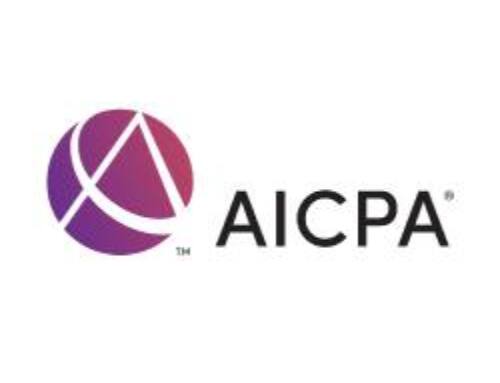Submitted by Margaret Krajcer, JD, vice president and general counsel of Tax Credits Group. TCG is a Cleveland-based firm specializing in federal and state R&D tax credits and the Employee Retention Credit. She can be reached at maggie@taxcreditsgroup.com.
While many CPAs are aware that the federal government has enacted an Employee Retention Credit to aid employers who were negatively impacted by COVID-19, there are still a lot of misconceptions about the rules and requirements needed to claim it. Furthermore, while the ERC is a tax savings opportunity that businesses should consider, there are definitely limitations to it, and not all businesses impacted by the pandemic will qualify. In this two-part blog series, I’ll outline the basics behind this new tax credit, and provide thoughts on key considerations that should be taken into account before claiming it.
ERC Overview
The Employee Retention Credit (ERC) is a refundable payroll tax credit created by the 2020 Coronavirus Aid, Relief, and Economic Security (CARES) Act as a relief measure for struggling employers during the COVID-19 pandemic, specifically those employers who kept employees on the payroll. It is a wage-based credit and is dependent upon the total compensation amount paid to eligible employees including wages and certain health plan expenses.
ERC Legislation:
Since its original enactment, the ERC has been further modified and clarified through 3 subsequent legislative Acts; The Consolidated Appropriations Act (CAA), The American Rescue Plan Act (ARPA), and the Infrastructure Investment and Jobs Act (Infrastructure Act). A few critical takeaways from these Acts include the following:
- CARES – Under the original Act, the ERC was only available to businesses throughout 2020, and to employers who did not claim SBA-backed Paycheck Protection Program (PPP) loans.
- CAA – This Act strengthened the ERC by amending eligibility to extend to Q1 and Q2 2021, and to PPP loans recipients.
- ARPA – The Act also broadened the ERC opportunity by extending it to employers throughout the third and fourth quarters of 2021 and by introducing “Recovery Start Up Business” assistance, which is available to businesses who started after February 15, 2020, and may have not met the original eligibility requirements of the ERC. Further, the statute of limitations for the IRS to audit the ERC was extended from 3 to 5 years.
- Infrastructure Act – This latest Act narrows the ERC opportunity by retroactively eliminating the ability to claim it in Q4 2021 for most employers, the exception being Recovery Startup Businesses.
Under the culmination of these various Acts, today, the total max credit amount that an eligible employer can receive through the ERC is now $26,000 per eligible employee:
- 2020 ERC – Provides eligible businesses a refundable tax credit of 50% of up to $10,000 in wages paid per employee in 2020. This means businesses can receive a max credit of $5,000 per employee.
- 2021 ERC – Provides eligible businesses a refundable tax credit of 70% of up to $10,000 in wages paid to each employee per eligible quarter of Q1, Q2, Q3., This means businesses can receive a max credit of up to $7,000 per eligible employee per eligible quarter up to $21,000.
ERC Eligibility
With an opportunity to receive up to $26,000 per eligible employee, many businesses impacted negatively by the pandemic want to understand if they are eligible to claim it.
To address this question, an employer must look toward two separate eligibility tests; a gross receipts test and a business operations suspension test. An employer needs to meet only one of the tests to qualify, and eligibility can and should be determined for each payroll quarter.
For instance, in order to qualify for the ERC in 2020, for the period from March 13, 2020, through December 31, 2020, a business must have been partially or fully suspended due to government authority COVID-19 orders, or the business must have experienced a significant decline of greater than 50% in gross receipts in comparison to the same calendar quarter in 2019.
Similar to the 2020 eligibility, for 2021 (January 1, 2021, through September 30, 2021) a business must have been partially or fully suspended due to government authority COVID-19 orders, or the business must have experienced a decline of greater than 20% in gross receipts in comparison to the same calendar quarter in 2019. Taxpayers may also elect to use the immediately preceding quarter, to determine eligibility.
While the gross receipts eligibility test is clear, the partial and full suspension eligibility test is one that is much more vague. Typically, if a business is required to shut down due to government orders, then the business qualifies for the ERC. The unclear part is those businesses that were partially shut down or deemed to be “essential” businesses.
In the partial shutdown situation, businesses may have experienced limited operation hours, limited office capacity, and activity limitations. Businesses are considered to be partially shut down if the suspended activities make up more than a nominal portion of the business. Through recent IRS notices, the IRS references “nominal” as being less than 10% of the business operations or the total hours of service performed by its employees.
—–
This was a quick explanation on the ERC along with details for eligibility. If you believe a South Carolina business you’re working with may be eligible to claim it, be sure to check back in on the SCACPA blog next week to learn about critical impacts and considerations that should be assessed before submitting a claim.


